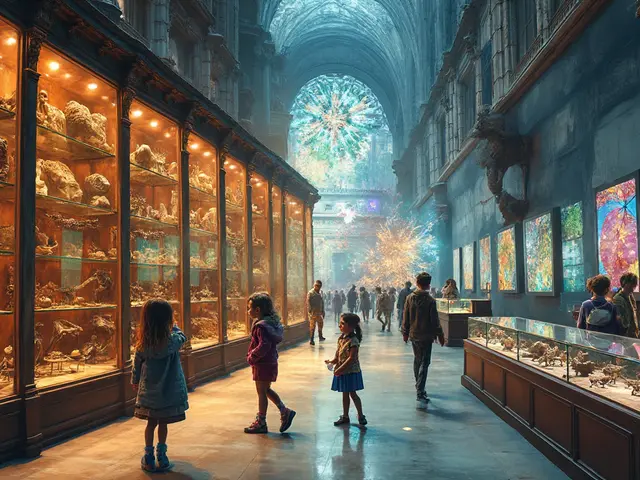If you’ve ever wandered along the South Bank in London, odds are you’ve looked up and caught yourself staring at that gigantic circle slicing through the skyline – the London Eye. You’ll hear tourists calling it a Ferris wheel, but for Londoners, it’s something much more: a modern-day landmark, a rite of passage for school trips, and, let’s be honest, a brilliant place to stare across the capital and play spot-the-famous-building. Whether you’re living in London or just nipping down on the train, the Eye isn’t just another box-ticking attraction. The story behind it, and what it’s like today, is a whole lot richer than many locals even realise.
The History: Vision, Engineering, and Unlikely Success
The thing most folks don’t realise? The London Eye was never supposed to be permanent. Back in the late ‘90s, the city was buzzing with Millennium fever. Tony Blair was in Number 10, boy bands were at peak popularity, and London wanted to ring in the year 2000 with something big. Architects David Marks and Julia Barfield pitched their idea for a massive observation wheel to countless city councils and businesses. More than one said no, including the Royal Parks. It took a couple of years for anyone to bite, but in the end, British Airways agreed to bankroll the project. Finding someone brave enough to build the structure was even trickier; in classic British style, the main pieces arrived by barge up the River Thames and had to be assembled lying down, then hoisted up over several days. For months it looked almost comic, lying flat like some broken hula hoop on the South Bank. No one had ever tried to build something quite like it on this scale – 135 metres high at the apex, taller than Big Ben and St Paul’s. The 32 pods, representing the 32 London boroughs, were each 10 tonnes and fully enclosed, an innovation that countered both British weather and the city’s love of a good skyline view.
Originally, the London Eye was planned as a five-year installation to mark the Millennium. Nobody expected it would become the most popular paid tourist attraction in the UK, drawing nearly three and a half million people a year (pre-pandemic days, of course). The wheel opened a little late – the first official spin wasn’t until March 2000 because of technical hitches, including that now-famous story where they couldn’t get the safety certificate on time for New Year’s Eve. But delays aside, it instantly clicked. Kids started pointing it out from bus windows, holidaymakers queued round the block, and even hard-to-please locals gradually warmed up – especially after the Eye became the star of London’s annual New Year’s Eve fireworks on telly.
Highlights: What to Expect When You Visit
Once you step into one of those glassy pods, you get a sense of why people rave about this as one of the top London attractions. There’s a kind of hush as the doors close. Each pod can fit around 25 people, but it never feels too crowded – you can lean against the glass and watch the Thames snake off both ways, see the Shard glinting in Southwark, or pick out BT Tower hiding behind Soho’s rooftops. On a clear day, some claim you can see as far as Windsor Castle. The full rotation takes about 30 minutes, which is just long enough to spot hidden corners of London you’ve never noticed before – the gardens on rooftops, boats hustling up and down the river, and clusters of red buses like toys below. The speed is a gentle crawl; you barely sense movement, which means even people who normally don’t do heights (I’m looking at you, Uncle Terry) tend to relax once they’re up there. If you ask local kids what their favourite bit is, many will tell you it’s the way the pod seems to “hover” at the very top, giving you a minute to soak up the patchwork of London’s old and new before the slow descent starts.
The London Eye has hosted its fair share of surprises. There have been weddings in pods (yes, you can book that), and even a handful of marriage proposals carried out above the rooftops. If you’re planning a special moment, check out the VIP experiences – “Cupid’s Capsule” for couples brings you chocolate truffles and Champagne. Meanwhile, families usually rate the “4D Cinema” experience at the ticket office, which is a short, immersive film with a few whizzy visual effects thrown in (my son Callum loves the spray of mist). Another tip for locals: there’s a special Resident Ticket for those with a London postcode, which knocks a bit off the usual price if you book online in advance. These sorts of discounts aren’t always obvious, so dig around on the Eye’s official site or apps like Time Out or Londonist.
Tips and Odd Facts for Navigating the London Eye
First off, try not to turn up without a ticket, especially in summer or at Christmas – queues can wrap half the way along the riverside. Book online if you can. Early mornings or just before closing (especially in winter when the city lights start to glow) are hands down the best slots – fewer crowds, better photos. If you’re after those knockout Instagram shots, grab a corner in the pod as soon as you step in, and avoid reflections in the glass by wearing dark clothing. Fancy making a day of it? Combine your Eye ticket with the London Aquarium, which is right next door, or a stroll over Hungerford Bridge to browse books under Waterloo Bridge. I always recommend nipping down to Gabriel’s Wharf for a coffee and slice of cake after – the crowds there are thinner, and there’s space to chill with riverside views.
You’ll spot some quirks on the wheel itself. There’s no “number 13” pod – classic British superstition – so they’re simply numbered 1–33, skipping unlucky 13. In terms of stats, since it opened, the Eye has rotated over 75,000 times – that’s the equivalent of two round-the-world trips. The steel itself weighs more than 1,700 tonnes, and the foundations go as deep as a London Underground tunnel. The Coca-Cola logo that used to sit at its heart (after the drinks giant took over sponsorship from British Airways and EDF Energy) has vanished, but these days, you’ll see subtle nods to Merlin Entertainments, the group now steering the attraction. For fans of local trivia, nearly all the Eye’s mechanical parts were designed or built in the UK – those huge cables come from Yorkshire, while glass panels were shipped from Scotland.
| Year Opened | Total Height (metres) | Visitors Per Year (millions) | Number of Capsules |
|---|---|---|---|
| 2000 | 135 | 3.5 | 32 |
The London Eye and the South Bank: Beyond the Ride
Here’s the best bit – the Eye has turned the South Bank into a buzzing cultural spot. Back in the ‘80s and ‘90s, the stretch between the National Theatre and Jubilee Gardens had a tired, run-down feel. Post-2000, you suddenly had riverside cafes, buskers playing outside the Tate Modern, and street food stalls peddling everything from Pad Thai to Yorkshire pudding wraps. Shakespeare’s Globe sits a short walk along the river if you fancy culture after your ride. The skatepark under Queen Elizabeth Hall, just up the slope, is forever attracting teens showing off kickflips next to tourists stopping for photos.
Sunday afternoons see food markets setting up in tucked-away corners (go for the brownies from Southbank Centre Food Market if you want something local). The Eye itself takes part in several city events each year, from lighting up in rainbow colours for Pride in London to going green for St. Patrick’s Day. For the locals, watching the Eye “dress up” is a quirky, comforting sign that there’s an event or celebration coming up. If you’re thinking of making a day for the family, Southbank Centre often runs free exhibitions or craft workshops for kids. Plus, London Dungeon – just a couple of arches down – offers a theatrical take on proper scary (but weirdly funny) London history, so if you’re not with little ones or if you fancy a laugh, tack it on after your ride.
To round off the trip: yes, it’s worth grabbing a touristy fridge magnet afterwards – but try also popping into the independent shops at the neighbouring OXO Tower for something uniquely crafted in London. For Londoners, the Eye’s impact is measured not just in ticket sales or selfie counts, but in how it’s helped turn a strip of former office space into one of the city’s best-loved meeting points. It’s a place to catch the sunset, bump into old mates, or simply marvel, year after year, at how much the view of the capital changes. From up there, the hustle and grind of city life seems a bit smaller, and the possibilities a bit bigger. That’s the real magic of the London Eye.




